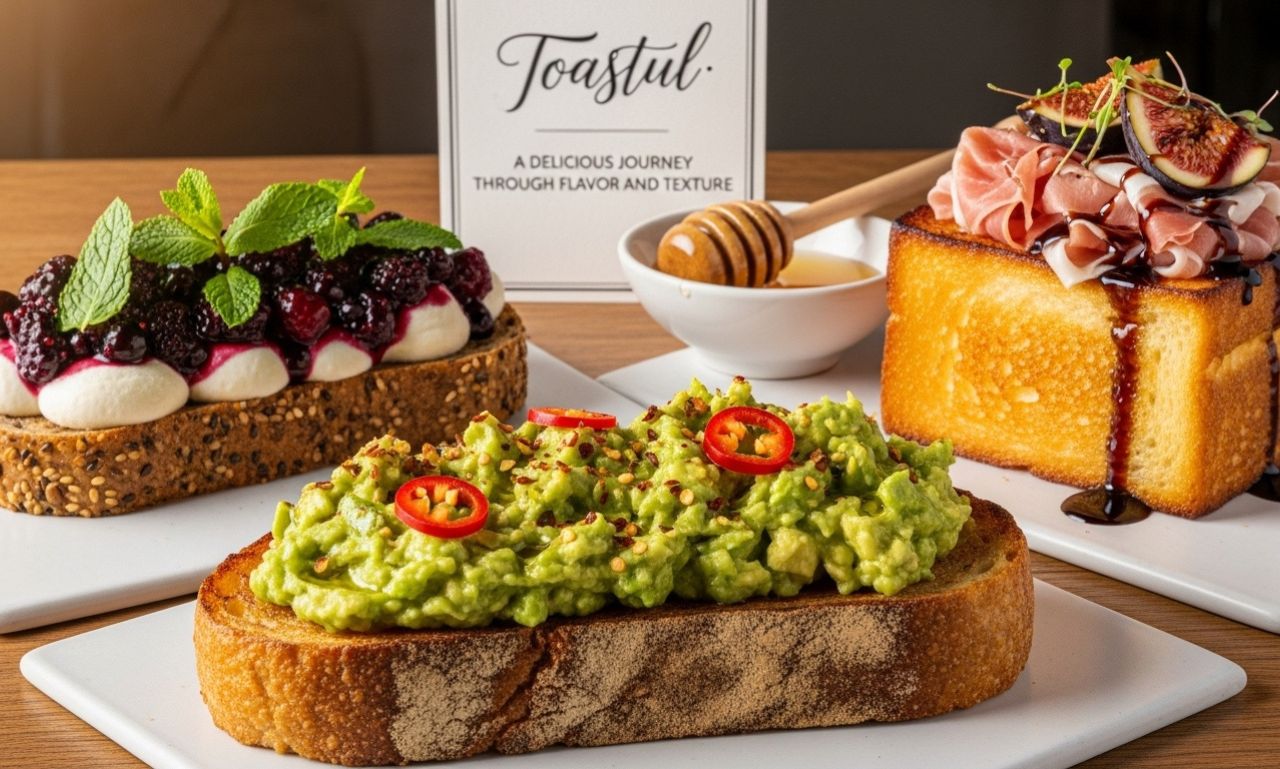At its core, toasting is a beautiful and simple chemical process. Understanding this is the first step to mastering Toastul.
- The Maillard Reaction: This is the star of the show. When bread is exposed to heat (typically between 280-330°F or 140-165°C), the amino acids and reducing sugars in the bread undergo a complex series of reactions. Named after the French chemist Louis-Camille Maillard, this process is responsible for the beautiful golden-brown color, the enticing aroma, and the rich, nutty flavor that defines great toast. It’s the same reaction that gives seared steak and roasted coffee their characteristic flavors.
- Caramelization: As toasting continues, the natural sugars within the bread (and any added sugars in the dough) begin to caramelize. This process, which occurs at slightly higher temperatures than the Maillard reaction, contributes deeper, sweeter, and more complex flavors, ranging from butterscotch to a slight bitterness at the edges.
- Dehydration: Simultaneously, the intense heat drives moisture out of the bread. This loss of water transforms the soft, pliable texture of bread into a firm, crispy, and rigid structure. This structural change is crucial—it provides the satisfying crunch and the sturdy base needed to support toppings.
The perfect slice of Toastul exists in the sweet spot where the Maillard reaction and caramelization have worked their magic, but before the processes tip over into pyrolysis—the burning of carbon, which results in a bitter, blackened, and often carcinogenic slice.
The Foundation: Choosing Your Canvas
The bread you choose is the single most important variable in Toastul. The canvas dictates the final masterpiece.
- Sourdough: The darling of the artisanal toast world. Its tangy flavor, complex crumb, and sturdy crust toast beautifully, creating a robust platform for both simple and elaborate toppings.
- Whole Wheat & Multigrain: These offer a nutty, hearty base. The seeds and grains within can toast to a delightful crunch, adding textural complexity.
- Brioche or Challah: For a decadent, dessert-like Toastul. Their high egg and butter content leads to a rich, tender crumb that caramelizes wonderfully, perfect for sweet applications.
- Rye & Pumpernickel: These dense, flavorful breads produce a toast with a deep, malty, and slightly spicy profile, ideal for strong flavors like smoked fish or sharp cheese.
- Classic White Sandwich Bread: The nostalgic choice. It toasts to a uniform, soft crunch and a mild, buttery flavor, making it the perfect vehicle for childhood favorites like jam or peanut butter.
The Tools of the Trade
The method of toasting significantly impacts the final product.
- The Pop-Up Toaster: The workhorse of convenience. It offers speed and consistency but provides little control over the toast’s texture, often drying out the bread.
- The Toaster Oven: A more versatile option. It allows for melting cheese directly on top and toasting larger or irregularly shaped items like bagels or artisanal slices. The radiant heat can create a more even toast.
- The Broiler: Offers intense top-down heat, perfect for achieving a beautifully blistered, bubbly surface, especially for open-faced melts or bruschetta. It requires careful vigilance to avoid burning.
- The Skillet or Grill Pan: For the ultimate control. Toasting bread in a pan with a little butter, oil, or even dry allows for a uniquely crisp, buttery exterior with a slightly softer interior. It’s the method for “Texas Toast” or the perfect base for a fried egg.
The Global Language of Toastul
Toastul is a universal concept with delicious regional dialects.
- Italy: Bruschetta & Crostini. The quintessential savory Toastul. A thick slice of rustic bread, grilled, rubbed with garlic, drizzled with olive oil, and topped with ripe tomatoes, basil, or beans.
- France: Tartines. The epitome of elegant simplicity. An open-faced sandwich on a slice of artisanal bread, often sourdough or a rustic baguette, topped with anything from avocado and radishes to smoked salmon and crème fraîche.
- United Kingdom: Beans on Toast. A beloved comfort food. Buttered toast smothered in warm, savory baked beans—simple, hearty, and deeply satisfying.
- Australia & New Zealand: Avocado Toast. The dish that launched a thousand café menus. Mashed avocado on sourdough, elevated with toppings like chili flakes, feta, a poached egg, or “everything bagel” seasoning.
- USA: The Diner Classic. Thick-cut white bread toasted and slathered with butter and jam, or serving as the foundation for the classic BLT (Bacon, Lettuce, and Tomato) sandwich.
The Art of the Top: Elevating Your Toastul
Modern Toastul is about creativity and balance. The best toppings consider texture, flavor, temperature, and visual appeal.
Savatory Inspirations:
- The Classic: High-quality salted butter, allowed to melt into the warm nooks and crannies.
- The Creamy: Ricotta, goat cheese, or cream cheese with a drizzle of honey and a sprinkle of black pepper.
- The Umami Bomb: Mashed avocado, a soft-boiled or fried egg, a sprinkle of flaky sea salt, and a dash of hot sauce.
- The Elegant: Smoked salmon, a schmear of crème fraîche, capers, and fresh dill.
- The Hearty: Hummus, sliced cucumber, roasted red peppers, and a sprinkle of za’atar.
Sweet Sensations:
- The Nostalgic: Peanut butter (crunchy or smooth) and a layer of fruit jam.
- The Decadent: Nutella, sliced bananas, and a pinch of sea salt.
- The Simple: Cinnamon sugar sprinkled over buttered toast.
- The Gourmet: Mascarpone, fresh berries, and a drizzle of reduced balsamic glaze.
The Final Word: Why Toastul Endures
Toastul is more than a food; it’s a ritual. It’s the sound of the slice popping up, the smell that fills the kitchen, the warmth in your hands on a cold morning. It represents a blank slate for culinary expression, a testament to the power of simple transformation, and a universally accessible delight.
From a student’s quick snack to a chef’s curated masterpiece, Toastul is a testament to the idea that the simplest things, when done with care and intention, can be truly extraordinary. So the next time you slide a slice of bread into the toaster, remember—you are not just making breakfast. You are participating in the timeless, global tradition of Toastul.

